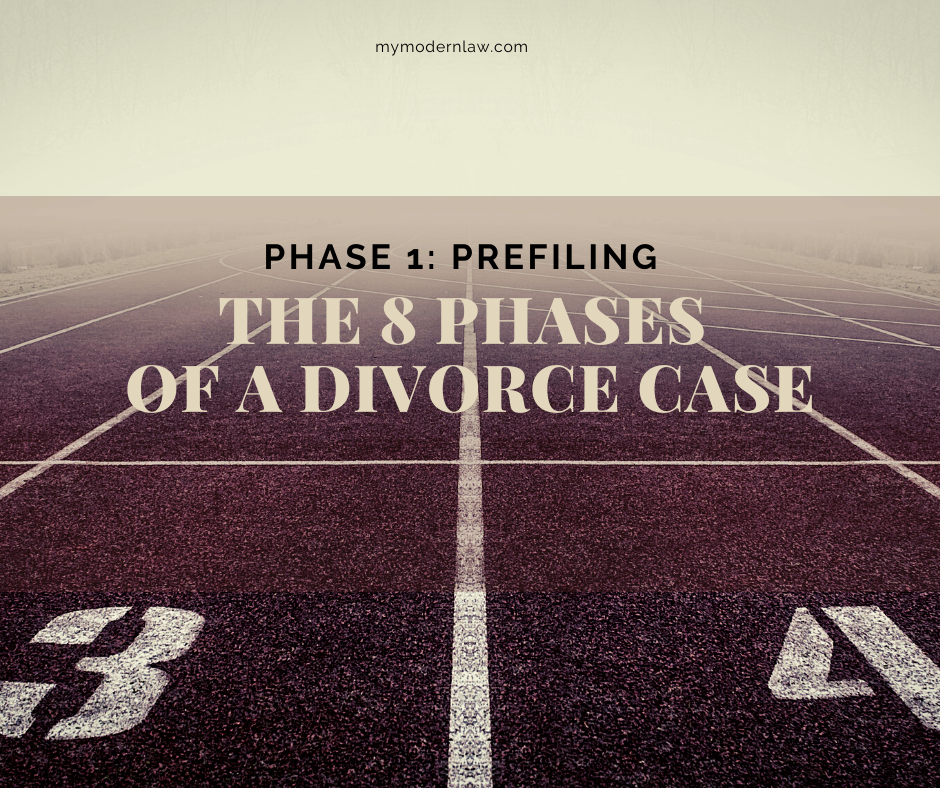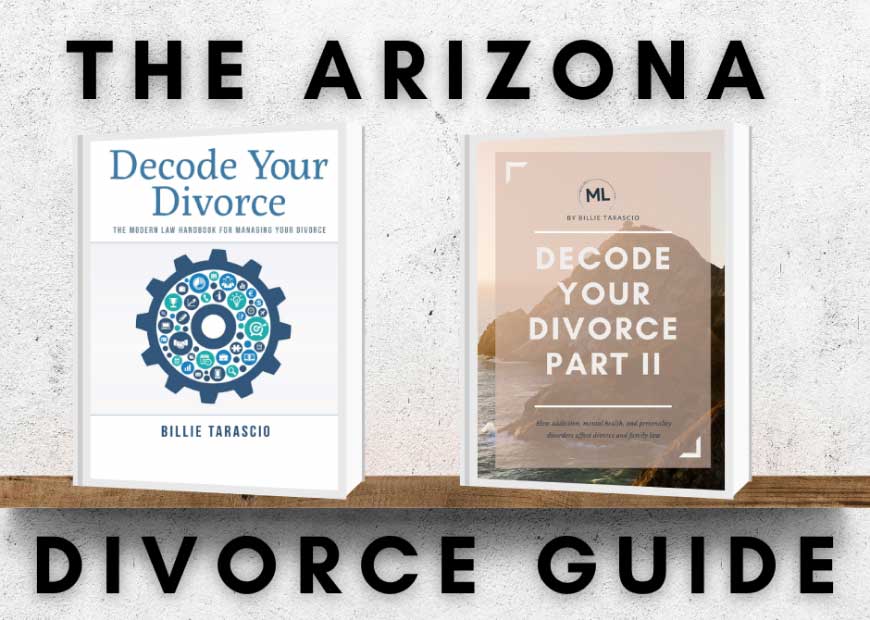In this series of articles, we will be looking at the various phases of a typical divorce case. You’ll learn more about the timeframe that it takes to get a divorce, what’s expected of you, and what you need to do to be ready for each phase. In this article, we’ll be looking at the first phase of a divorce. This is known as the prefiling phase, and it is everything that happens before someone files initially or for modification. Essentially, this is the phase where you are first starting to think about getting a divorce.
You Decide You Want a Divorce
You might be in a marriage that you know is not working. Even though you may have married for the right reasons, something has happened that has made you realize that it would be better to be divorced than to continue staying married. Arizona is a no-fault state, which means that in the vast majority of cases, you don’t need to give a reason for wanting a divorce. And if both parties agree and it’s a fairly clean separation, Flat Fee divorce operations are always available.
You and your spouse might have started to grow apart. Maybe you realize that you don’t want the same things in life, and it would be better to get out of the marriage sooner rather than later. In other cases, there could have been an affair that can’t be forgiven. Perhaps one of the spouses spends too much money frivolously. There could be countless reasons to want to get a divorce.
Exceptions to the No-Fault Rule
If you are in a covenant marriage, the court can only grant a dissolution of marriage in certain cases. There are eight reasons that you could get a divorce if you are in a covenant marriage. These include:
- The respondent in the case has committed adultery.
- The respondent has committed a serious crime and has been sentenced to imprisonment or death.
- For at least a year before filing for divorce, the respondent has been absent from the marital home and refuses to return.
- The respondent has either physically or sexually assaulted their spouse, a child, or a relative of either spouse who lives permanently in the marital home or committed domestic violence or emotional abuse.
- The spouses have been living separately and have not gotten back together for at least two straight years before filing for divorce.
- The couple has been granted a legal separation and has not gotten back together for at least a year from the date of the legal separation.
- The respondent has abused drugs or alcohol regularly.
- Both spouses agree to get a divorce.
How Long Does This Phase Take?
The length of time for the prefiling phase will vary substantially from one case to the next. You might know right now that you want to get a divorce and move forward. Other times, you might try to work on the marriage and deal with any issues you have. Most of the time it will take from less than a month to two years to get to the point where you know that divorce is the best option for you. You might have already been thinking about it for a while and are now just starting to move forward.
During this time, you will want to start preparing for the fallout of the divorce. You have to think about things like what you will do for a place to live, how you will make ends meet with less income, etc. It’s time to plan, and part of that will involve speaking with an attorney about prefiling.
Think About the Pros and Cons of Court Intervention
How is your case going to proceed? If you and your spouse can agree on the elements that come up in the divorce, you will be able to reach an agreement on your own. If it’s deemed fair, you won’t have to go to trial. This has some great benefits. It means that you will have more control over what happens with community property, as well as your parenting plan. It’s an ideal option, and you will find that with proper negotiation, many cases can and do settle.
However, if there are areas where you can’t agree, it will need to go through the courts. The judge is there to make the final decisions on those areas where you can’t agree. While this might be the only option in some instances, it does mean that both you and your spouse have less control. Neither of you may be happy with the results the judge chooses. Still, it might be the only option in some cases.
Talk with an Attorney
Can you do a DIY divorce? You can and in the case of a simple, uncontested divorce where you and your spouse agree on everything, it might be the better and cheaper solution. However, many divorces don’t proceed quite so smoothly. There will be elements where you and your spouse disagree with one another. In those cases, you will instead want to have an attorney working with you.
Take the time now, during the prefiling phase, to get in touch with an experienced divorce attorney in your area. Let them know the details of your case—as much as you currently know—and see what kind of help they can offer in terms of strategy, ensuring you are filing correctly, negotiations, etc. Having the help of a good attorney can give you some added peace of mind.
Start to Gather Evidence and Get Organized
Now that you know you are going to be getting a divorce, it’s time that you started to gather evidence that will help you with your case. You’ll want to keep everything including bank statements, business information, texts from your spouse, emails, etc. Talk with your attorney about the types of evidence that you should be gathering for prefiling. This will continue throughout much of the divorce, and it’s better to start early. You will also want to have an organized system that will make it easier for you to find what you need later.








